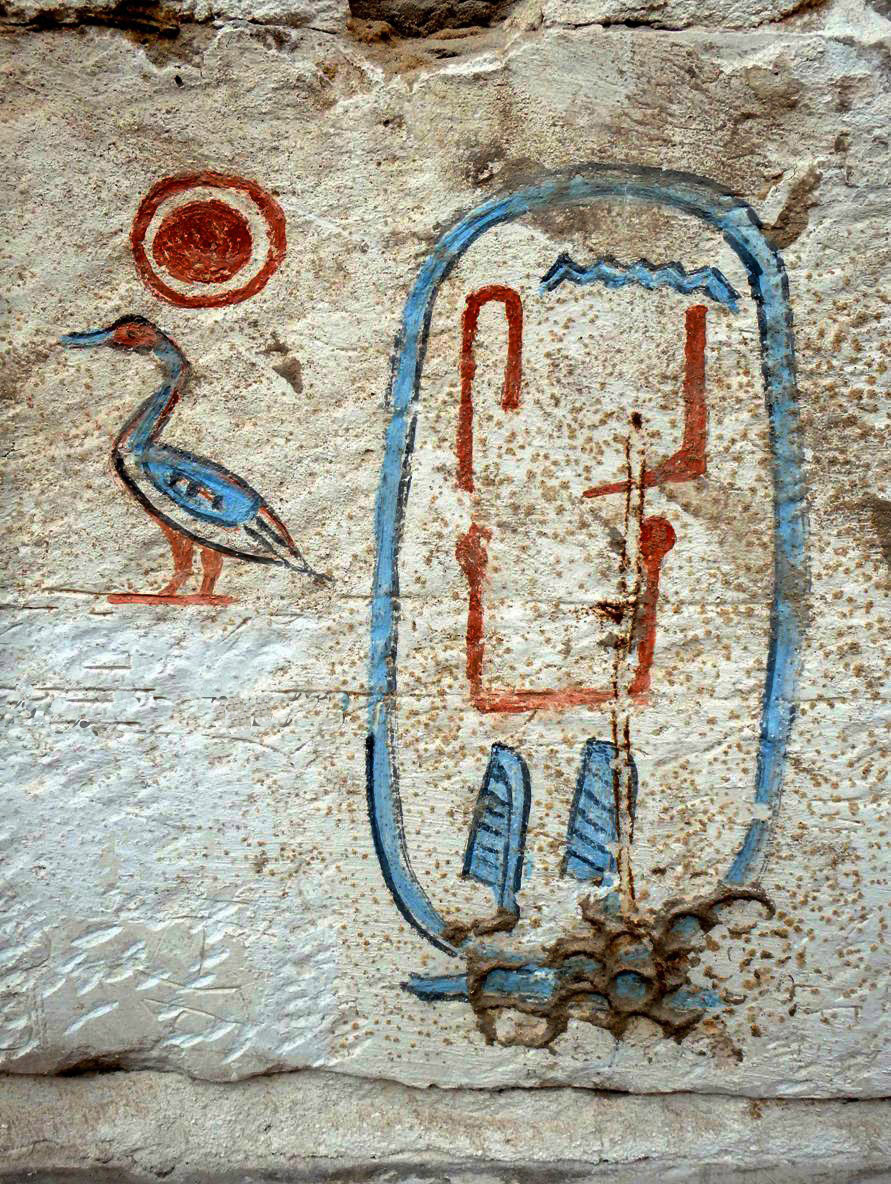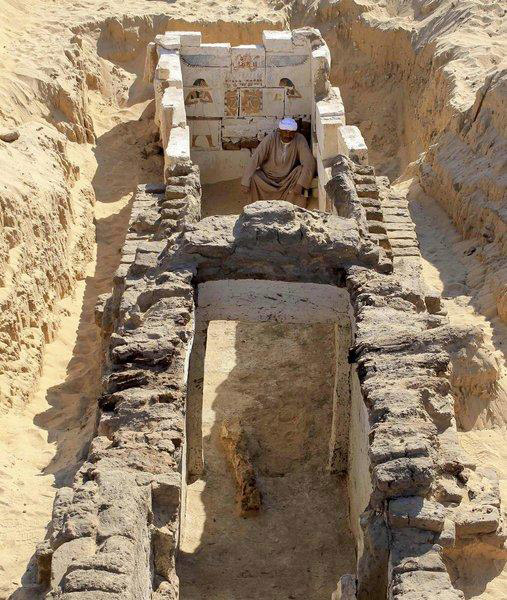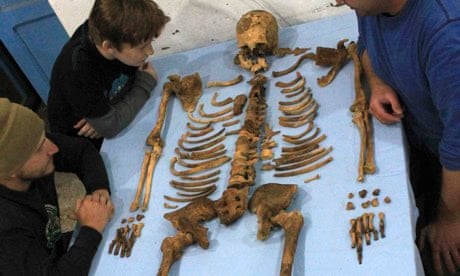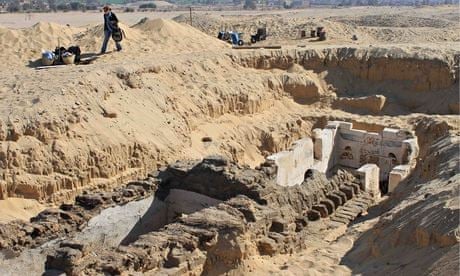U.S. archaeologists digging at Abydos, Egypt say they have discovered the tomb of Woseribre-Senebkay, a previously unknown Egyptian pharaoh who ruled during the Second Intermediate Period, shortly before 1650 BC.

The cartouche of a newly discovered pharaoh, Woseribre Senebkay, inside the king’s burial tomb. Image credit: Jennifer Wegner, Penn Museum.
The excavations at Abydos during the 2013 season have yielded numerous finds including a royal tomb with a large sarcophagus weighing almost 60 tons.

The tomb was uncovered close to the recently discovered tomb of Sobekhotep (1780 BC), the first king of 13th Dynasty.
According to the archaeologists from the University of Pennsylvania, the sarcophagus, of red quartzite quarried and transported to Abydos from Gebel Ahmar, near Cairo, dates to ca. 1650 BC.

Painted decoration in the burial chamber of the pharaoh Woseribre Senebkay. Image credit: Jennifer Wegner, Penn Museum.
They identified it as belonging to a previously unknown pharaoh named Woseribre Senebkay – one of the earliest kings of a forgotten Abydos Dynasty, contemporary with the 15th (Hyksos) and 16th (Theban) Dynasties. The existence of this dynasty was first hypothesized by Prof Kim Ryholt from the University of Copenhagen in 1997.

The tomb of Senebkay consists of 4 chambers with a limestone burial chamber, painted with images of the goddesses Nut, Nephthys, Selket, and Isis flanking the ruler’s canopic shrine.
Other texts name the sons of Horus and record the king’s titulary and identify him as the ‘king of Upper and Lower Egypt, Woseribre, the son of Re, Senebkay.’
The tomb was badly plundered by ancient robbers who had ripped apart the king’s mummy as well as stripped the tomb equipment of its gilded surfaces.

Close up of Penn Museum excavations of a recently discovered royal chamber at Abydos, Egypt, June 2013. The discovery of this chamber led researchers to the nearby tomb of a previously unknown pharaoh, Woseribre Senebkay. Image credit: Josef Wegner, Penn Museum.
Nevertheless, the archaeologists recovered the Senebkay’s remains amidst debris of his fragmentary coffin, funerary mask, and canopic chest.

Preliminary work on the king’s skeleton indicates he was a man of moderate height, around 1.75 m, and died in his mid to late 40s.
According to the team, the discovery of Senebkay now identifies the location of the Abydos Dynasty’s royal necropolis at South Abydos in an area anciently called Anubis-Mountain.

The kings of this dynasty placed their burial ground adjacent to the tombs of earlier Middle Kingdom pharaohs. There is evidence for about 16 royal tombs spanning the period 1650-1600 BC.
The scientists say the Senebkay’s name may have appeared in a broken section of the famous Turin King List, a papyrus dating to the reign of Ramses II, 1200 BC, where two kings with the throne name ‘Woser … re’ are recorded at the head of a group of more than a dozen kings, most of whose names are entirely lost.

A painted scene of the goddesses Neith and Nut, protecting the canopic shrine of the pharaoh Woseribre Senebkay. Image credit: Jennifer Wegner, Penn Museum.
The tomb of pharaoh Senebkay is modest in scale. An important discovery was the badly decayed remains of Senebkay’s canopic chest. This chest was made of cedar wood that had been reused from the nearby tomb of Sobekhotep I and still bore the name of that earlier king, covered over by gilding.

Such reuse of objects from the nearby Sobekhotep tomb by Senebkay, like the reused sarcophagus chamber found during the summer, provides evidence that suggests the limited resources and isolated economic situation of the Abydos Kingdom which lay in the southern part of Middle Egypt between the larger kingdoms of Thebes and the Hyksos in northern Egypt.
Unlike these numbered dynasties, the pharaohs of the Abydos Dynasty were forgotten to history and their royal necropolis unknown until this discovery of Senebkay’s tomb.

“It’s exciting to find not just the tomb of one previously unknown pharaoh, but the necropolis of an entire forgotten dynasty,” said team leader Dr Josef Wegner of the Penn Museum.
“Continued work in the royal tombs of the Abydos Dynasty promises to shed new light on the political history and society of an important but poorly understood era of Ancient Egypt.”